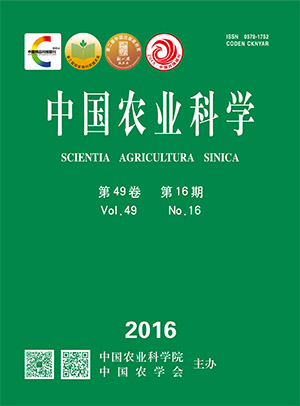-
Effects of Five Fungal Chaff Pretreatment Methods on Substrate Properties and Growth of Rice Seedlings
- LIU Bin, HAN Ya-nan, YUAN Xu-feng, ZHU Wan-bin, WANG Xiao-fen, CUI Zong-jun
-
Scientia Agricultura Sinica. 2016, 49(16):
3098-3107.
doi:10.3864/j.issn.0578-1752.2016.16.004
-
 Abstract
(
548 )
Abstract
(
548 )
 HTML
(
13 )
HTML
(
13 )
 PDF (397KB)
(
603
)
PDF (397KB)
(
603
)
 Save
Save
-
References |
Related Articles |
Metrics
【Objective】 Fungal chaff is a practical choice for rice seedling substrate technology. However, it can cause poor growth, seedling blight, and prevent maturation without pretreatment. Therefore, this study used five different pretreatments to explore optimal growth substrate properties and seedling growth to utilize agricultural wastes as rice seedling substrates.【Method】An experiment for raising rice seedlings carried out in a green house, pretreated substrates with 5methods were used a mix of raw fungal chaff material (T1), fermented compost (T2), adding 10% volume pig manure to ferment compost (T3), steam sterilization (T4), and hot-air sterilization (T5). Soil was used as a control group and spring climate conditions of northeast China were simulated. A comprehensive evaluation was carried out on the bulk density of the substrate, porosity (total porosity, air filled porosity, and water holding porosity), nutrients (total nitrogen content, total phosphorus content, total potassium content, total organic matter content, available K content, available P content and alkaline soluble N content), severity of rice seedling blight (blight areas and spots in weaning stage), and growth of seedlings for each pretreatment (after 30 days, agronomic traits of rice seedlings included leaf age, roots, stem diameters, SPAD values, weights of hundred seedlings), and a calculation method was applied per volume of nutritive element contents rather than a traditional weight ratio, in order to compare differences of treatments.【Result】The results after the pretreatment showed that the bulk densities were within a reasonable range. T1, T2, and T3 significantly improved total porosity and water-holding porosity, whereas T4 and T5 decreased these aspects compared to those of T1. The highest total nitrogen content per volume of nutritive element contents was detected in T3 (3.0×10-3 g·cm-3), and the other treatments were 1.6×10-3–1.8×10-3 g·cm-3; total phosphorus content was 4.0×10-4–6.0×10-4 g·cm-3. The highest total potassium content was detected in T2 (1.4×10-3 g·cm-3), and the other treatments were 7.0×10-4–9.0×10-4 g·cm-3. Total organic matter content was 6.6×10-2–8.0×10-2 g·cm-3. The highest alkaline soluble N content was observed in T3 (2.1×10-4 g·cm-3), and the other treatments were 0.9×10-4–1.2×10-4 g·cm-3. Available P content was 3.3×10-5–5.0×10-5 g·cm-3, and available K content was 0.6×10-4–1.2×10-4 g·cm-3. In addition, by calculating with C/N ratio of treatments, results showed that only T3 could reach a value below 20. The incidence rates of rice seedling blight in T1, T5, T2, and T4 were 30.53%, 3.27%, 1.09% and 1.09%, whereas none of the seedlings exposed to T3 developed blight during stage of weaning. Plant heights were 12–14 cm, stem diameters were 0.21–0.23 cm, and total SPAD values at the three-leaf stage were 25–35 in 30-day seedlings, and T3 resulted in the best values for these parameters. Fresh weight per 100 seedlings was 14.50–16.00 g, and dry weight per 100 seedlings was 3.15–3.75 g; the maximum values were observed in seedlings exposed to T2 and T3; the maximum root-top ratio was 0.30 (T2 and T3), the minimum value was 0.22 (T5), fresh-dry ratio of whole plant in all treatments was 0.20-0.23. 【Conclusion】The pretreatments did not significantly affect the nutrients in fungal chaff, as their content was mainly determined by the original composition of the substrate material. Fermenting compost resulted in better substrate properties and seedling growth, suggesting that this could be an effective way to control rice seedling blight, particularly if 10% volume pig manure is co-composted. This method could be developed to use agricultural wastes as a rice seedling substrate.









